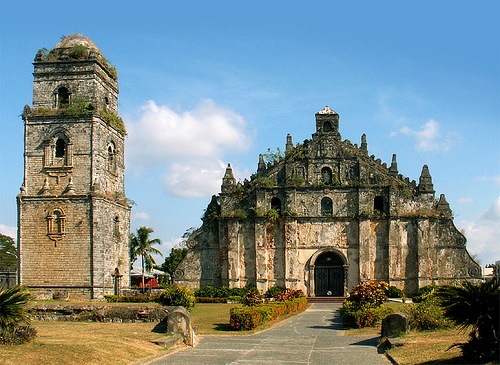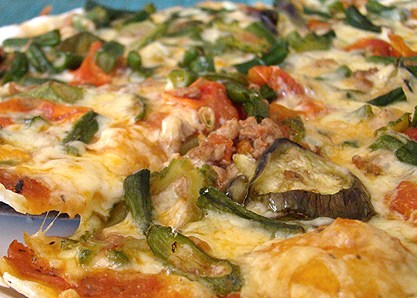Visit Paoay
Paoay in Ilocos Norte has one the most stunning, and popular churches in the country. It is called the St. Augustine Church.
The church was declared a national treasure by President Marcos in order to preserve its state. Paoay is now included in UNESCO’s World Heritage List
This famous Paoay church was constructed in the years 1896 to 1710. It is inspired by gothic, baroque and oriental architecture, and represented the Spanish, Filipino and Chinese influences that are unique to the Philippines.

Visit St. Augustine Church in Paoay
The Spanish friar-builders who constructed this church relied on their memories of European baroque architecture which resulted in its unique Filipino design of Paoay.
The Paoay church was actually started by the Augustinian Fr. Antonio Estavillo in 1694. It was completed in 1710 and rededicated in 1896, just three years before the expulsion of Spanish rule in the country.
The Paoay church was built to withstand the numerous earthquakes that are common to Ilocos Norte, and the walls are more than 3 feet thick. These walls are constructed from coral blocks, tree sap, stucco-plastered bricks and timber.
They used leather straps that were mixed with the mortar. The stucco is said to have been made from a mixture of sand and lime along with sugarcane juice, which was then boiled with mango leaves, leather and rice straw for two nights.
Visit St. Augustine Church in Paoay.
Unlike most other belltowers in Philippine churches, the Paoay Church bell tower is detached from the church. The tower was used as a lookout for the Katipuneros during the 1896 revolution, and also by Filipinos in the Second World War.
Belltowers are an important element in the overall composition of colonial churches, both for function and aesthetics. For practical purposes, belltowers were used as a communication device to the townspeople. There building comprises 24 massive buttresses jutting out from each side of the Paoay church.
The Paoay church has actually been partially destroyed by earthquakes on two occasions. There are now columns permanently set up to support the fragile ceiling. Some older Ilocano residents recall that the church ceiling was painted blue, with white clouds that made one feel you were going to heaven.
Visit the Herencia Cafe in Paoay
While there make sure your visit the Paoay market which is great for fresh and cheap produce. Aside from the usual local crops, you can also find various kinds of seaweeds like popoklo, papalunan, guraman, ararusit, and kulot. However get there early as vendors usually go home before lunch.
If you are hungry go and try the HERENCIA-DE-PAOAY right in front of San Agustin Church in Paoay. Literally meaning “heritage,” Herencia is a restaurant which has remained faithful to classical Ilocano cuisine that includes authentic and delicious servings of pinakbet and bagnet.
Also on the menu are various entrees from classical Spanish, Italian, and Indian cuisine like the Beef Salpicado, Chicken Lemon Grass and their exellent pasta collection.
The Arabbiata, which is spaghetti with stewed tomatoes, herbs and olive oil is delectable. Try some “fusion’ cuisine, with the Mango chicken with cheese curry sauce.
Visit Paoay
Herencia in Paoay has taken the quintessential Ilokano dish pinakbet to a a new level by creating the pinakbet pizza. By combining traditional Italian pizza with local ingredients used for pinakbet, Herencia has created a unique delicacy which is now famous in Paoay and everywhere else in Iloco Norte.
According to Herencia co-owner Sammy Blas (one of my wife's relations), the idea of using pinakbet as a topping for pizza was a great idea.
He uniquely used native ingredients bagoong, along with okra, eggplant, and longganiza meat as toppings over mozzarella cheese, all placed on a classic hand tossed pizza crust.
Visit Herencia Café at McArthur Street, Bgy. 14, Sangladan, Paoay (in front of Paoay Church). For inquiries you can tel. 077- 614 -0214.
Click on this link to find out more about Ilocos Norte and Pagudpud. All About Ilocos Norte Vacations . Visit Paoay


